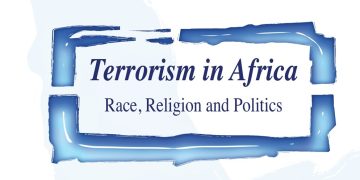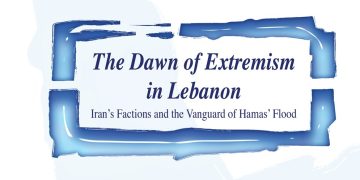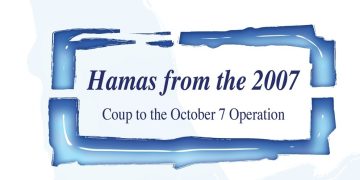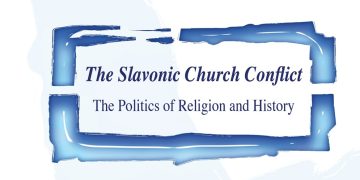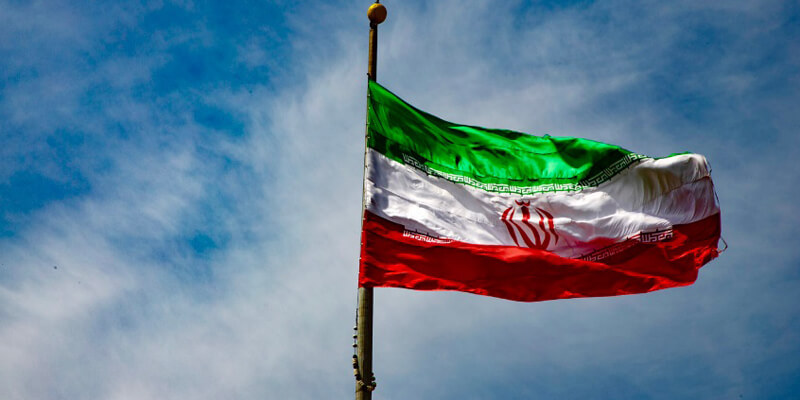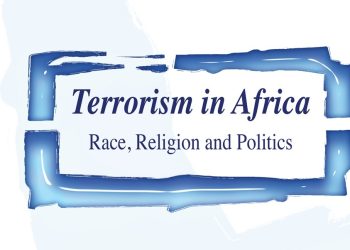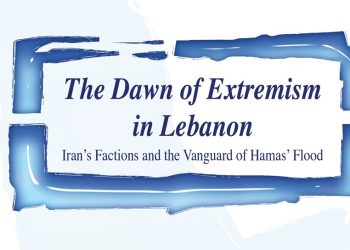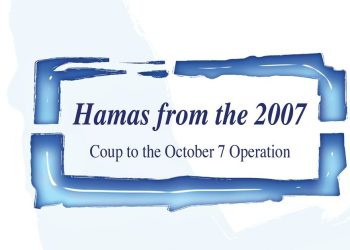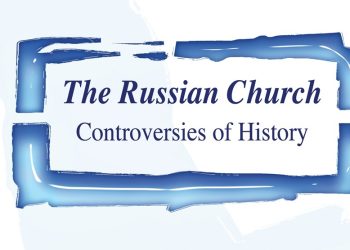The Syrian popular uprising against Bashar al-Assad’s dictatorship, which began in March 2011, soon acquired a two-fold character: both a horrific human tragedy on a vast scale, and a geopolitical turning point for the entire Mideast region – including as regards Iran’s expanding role in it. In May 2018, the new U.S. Secretary of State, Mike Pompeo, aptly summed up Iran’s intervention in Syria as follows:
Thanks to Iran, Hizballah provides the ground forces for the military expedition in Syria. The IRGC [Iranian Revolutionary Guard Corps], too, has continued to pump thousands of fighters into Syria to prop up the murderous Assad regime… Iran perpetuates a conflict that has displaced more than 6 million Syrians and caused over 5 million to seek refuge outside of its borders.[1]
Why did Iran exert all this effort in Syria? At an earlier stage, many analysts interpreted Iran’s interventionist posture as first and foremost a means to protect its air lifeline to Hezbollah in Lebanon, via Damascus airport. But this interpretation is woefully insufficient to the cause. For one thing, even without a foothold in Syria, Iran could have continued to supply Hezbollah more directly via Beirut airport, which that organization has fully controlled since 2008, long before the Syrian uprising – or else, though with greater difficulty, through Beirut’s seaport and other landing spots on Lebanon’s coast.
For another thing, Iran’s strategic designs on and appetite for Syria have grown exponentially with its experience there over the past seven-plus years. As Syria’s civil war ground on, Iran has come to view that country as much more than just a bridge to Hezbollah, and saving Assad as much more than just avoiding the embarrassing loss of a loyal ally. Rather, Tehran sees its growing presence in Syria as an integral part of a new “land bridge” or “Shiite crescent” all the way from Iran, across the Iraqi borders where Tehran has also established a solid proxy presence, right through Syria and Lebanon and up to the Mediterranean. This enables Iran to claim, with increasing plausibility, that it is the leading outside power in the Arab Levant. As one senior Iranian official famously put it, “today we control four Arab capitals: Sanaa, Baghdad, Damascus and Beirut.”
Looking ahead, other Iranian statements leave no doubt that it intends to use these platforms as a launching pad toward still grander objectives. These include: threatening Israel; marginalizing American influence in the region; pressuring Jordan, Saudi Arabia, and other Arab states; and competing with Turkey for dominance in the Middle East as a whole. All this is naturally a very long-term proposition; but Iranian foreign policy is nothing if not patient, persistent, and protracted in nature.
Furthermore, Iran has been able to accomplish much of this grandiose agenda at relatively modest cost to date. The financial costs to Iran’s struggling economy are substantial, probably several billion dollars annually, but apparently sustainable so far – even under severe international sanctions. This comports with the enduring phenomenon of ultimate control over many of the purse strings in Tehran, not by the parliament or even the government, but by the hardline Supreme Leader and his Revolutionary Guard. Their ideological allegiance is as much to the “resistance” across the region as to Iran’s internal development.
Equally bearable for Iran’s hardliners are the human costs of their Syrian expeditionary mission. A few thousand Iranian troops have been deployed there, and a perhaps a few hundred casualties, including a handful of high-ranking officers, sustained. Most of Iran’s assets in Syria, however, are not Iranians but proxy forces it commands: thousands of Hezbollah fighters from Lebanon, and even more, mostly Shiite fighters, in the tens of thousands, from further afield: Iraqis mobilized into various “popular militias,” Afghan refugees from inside Iran, and even Afghans and Pakistanis from their respective home countries.
Yet Iran’s most important “proxy” in Syria is not Shiite at all, or even Muslim. Rather, it is Russian. For it was Iran’s notorious expeditionary general Qasem Soleimani, in the summer of 2015, who journeyed to Moscow and convinced Russia to intervene militarily in order to rescue the teetering Assad regime, whose Alawite coastal enclaves were then in imminent danger of rebel onslaught. That Russian intervention, mainly in the form of just 40 or so fighter-bomber aircraft and associated small-scale forces, was sufficient to turn the tide in Assad’s favor once again, against an opposition bereft of anti-aircraft or other advanced weapons.
As a further consequence, Russia’s direct power projection into Syria soon compelled neighboring Turkey to temper its support for opposition forces there, and even to coordinate explicit and mutually exclusive spheres of influence with both Russia and Iran. For the time being, Iran and Russia are content to leave Turkish troops in charge of a large strip of territory on Syria’s northwestern border, from Afrin through Idlib, Azaz and Jarablus, cutting off the Kurds (and their American patron) in the country’s northeast – provided that Ankara does not interfere with the Syrian heartland further to the south. Thus it is that Iran has effectively enlisted two other major powers in the service of its interests in preserving the Assad regime and extending its own influence throughout most of Syria’s territory.
Iran and Its International Enablers in Syria
In mid-May 2018, the author spoke in Shanghai at a mid-sized meeting billed as “the first conference on Syria ever held in China,” including an influential Iranian foreign policy adviser, cosponsored by two leading local institutes (and facilitated by China’s embassy in Washington). The presence of diverse dignitaries in such a closed, relatively informal but intense forum afforded a rare opportunity for first-hand impressions of interactions among Chinese, Iranian, Syrian, and other key actors in the emerging, increasingly multipolar Middle East scene.
Speakers at the conference included an unusual mix of officials and scholars: the Chinese, British, and French special envoys on Syria, the UN’s senior political adviser on that issue, a Syrian government (but no opposition) representative, the Russian Deputy Consul General, plus diplomats and experts from Egypt, Jordan, Lebanon, and Turkey. But probably the most intriguing fellow conference speaker was a senior Iranian Revolutionary Guard Corps commander — a founder of Hezbollah, key player in the Iran-Contra hostage scandal, and formerly Iran’s ambassador to both Syria and Lebanon.
From my Iranian counterpart at the conference, I was struck by his repeated insistence on close coordination with both Russia and Turkey regarding Syrian policy. In his words: “These three countries together are in charge of developments in that country today, of course in consultation with the local authorities.” Notably, this was a sentiment that the representatives of Russia and Turkey seemed fully to reciprocate, despite recurrent reports of tactical differences among these three foreign forces on Syrian soil.
Also noteworthy was the Iranian’s consistent but carefully worded hostility to any American or Israeli presence in Syria – or, for that matter, anywhere else in the region. He made no explicit threats of retaliation for Israel’s attacks on Iranian and Hezbollah bases in Syria, which featured prominently in the early discussion at the conference. But Israel, he said, wants “regime change” in Damascus, and is therefore “afraid” of any political settlement that would stabilize Syria – and Israel is dragging the U.S. into this quagmire, precisely in order to prolong the crisis. He did not explain how this squared with his own promise that if Syria does stabilize, Iran’s army would leave the country – a prospect at the very top of Israel’s current desiderata.
Still, Sheibani’s interaction with other speakers was not without its humor. At one point I congratulated him for saying that “Iran does not want to remain an occupation army in Syria” – adding that I wished this would come true, despite my deep doubts about Iran’s veracity. This met with chuckles and smiles all around, even from the presiding senior Chinese official. Sheibani hastened to clarify his claim that for now, Iran is rightfully in Syria at the invitation of the legitimate host government. But then he doubled down on the offer to leave eventually, asserting that “if the Syrian government requests it, we hope that Hezbollah will also go home to Lebanon.”
The whole exchange strikes a pointed contrast with the declaration by Syrian President Bashar al-Assad, in a Russia Today television interview on May 31, that “we do not have Iranian troops” and “not a single Iranian martyr” in Syria – only “Iranian officers who work with the Syrian army to help.” This smokescreen was foreshadowed very vocally in Shanghai by the Syrian official at the conference, Bassam Abu Abdullah. In fact, he was alone in declaiming that the Syrian government (not “regime,” he insisted repeatedly) and the Syrian army were fully, firmly, and finally in control of all developments in their own country.
At the close of the conference, a senior UN official summarized the proceedings by noting what he termed “a few points of consensus,” notwithstanding some “very clear differences among the parties.” Participants, he averred, generally agreed that a “political settlement” is the best way forward for Syria; that the UN should take the lead in promoting it; and that such a settlement was urgently required to avert a wider regional war, address the humanitarian emergency, and begin the process of Syrian reconstruction. No one argued against these platitudes, and the Chinese participants, in particular, applauded them. Yet the overall tenor of the discussions, and especially of the Iranian interventions, showed just how distant the realization of those supposedly shared objectives of the “international community” remains today.
In this connection, the constant debate about Iranian participation in the Geneva conference is a distraction. It obscures the true nature of Iran’s massive continuing support for thousands of extremist sectarian militiamen, whether belonging to Hezbollah from Lebanon or Liwa Abu Fadl al-Abbas from Iraq or Iran’s own Qods Force, now fighting for Assad inside Syria. Even worse, the endless debate over Iran’s presence in Geneva obfuscates the real mandate of this international gathering, as agreed in the “Geneva I” declaration of mid-2012 that Iran continues to reject, as stated in the invitation letter to this Geneva conference: the need for a ceasefire and for humanitarian access and the need for a “transitional governing body” leading to democracy in Damascus.
The true extent of Iran’s hold on Syria’s current government is evident from the latter’s approach to the Iranian nuclear file in the past three years. Syrian official statements and media treatment were effusive in congratulating Iran on its gains from the nuclear framework — not only for “the interests of the Iranian people in nuclear energy,” but also for the international campaign to isolate Israel. The Assad regime’s Foreign Ministry, information minister, and UN ambassador each made detailed proclamations along those lines. The Regional Baath Command went even further, averring that the framework “reinforces confidence in victory over the common Zionist and terrorist enemy.”
Conversely, Syrian opposition spokesmen naturally rejected these assertions. One said the deal “will help Assad a lot…and we fully refuse any agreement signed at the expense of Syria.” Another conceded that the Iranians “made some concessions, but my fear is that they got a green light” for their encroachments in Syria and other Arab fronts. And during an April 6 segment on the Dubai-based Syrian opposition television channel Orient, the author was asked, “The U.S. is finally helping to stop Iran in Yemen, now what about Syria?”
At the other end of the spectrum, former Syrian cabinet minister Mahdi Dakhlallah, speaking from Damascus on Iran’s Arabic-language channel al-Alam, likewise concentrated on the deal’s nonnuclear implications — but in exactly the opposite political direction. He maintained that the “Iran nuclear Geneva” is a good omen for “the Syrian Geneva II conference,” because it “codifies the supreme rights of states” and signifies a “more pragmatic” U.S. attitude. Moreover, Washington should press Saudi Arabia, Turkey, Qatar, and even France to “stop exporting and arming jihadis in Syria.”
Current State of Play
The most salient features of Iran’s current position in Syria, and its implications for other players, are well summarized in a recent report by the International Crisis Group, as follows:
The Syrian war has entered a new stage with the regime of Bashar al-Assad gaining the upper hand… the regime is more dependent than ever on Iran, which Israel regards as its most implacable foe; other enemies, particularly Hizbollah and Iran-backed Shiite militias, are entrenched in Syria with Russia’s blessing; and the U.S., notwithstanding the Trump administration’s strident rhetoric, has done little to reverse Iran’s gains. Yet… Russia has given [Israel] room to act against Iran-linked military interests … [so] hostilities between Israel and Iran may threaten its accomplishments, particularly regime stability.[2]
Looking at this picture from the south, “Israel’s red lines seek to block [Iran] from establishing an airport, naval port, military base, permanent presence of militias or precision weapon production facilities for Hizbollah.” Israel’s military action against these perceived threats is an ongoing, regular reality over the past three years, with well over 100 air and missile attacks on such targets and on associated air-defense installations all over the country; and, as the report correctly notes, “neither Iran nor Syria can stop it.”
Nevertheless, in a prescient prediction, the report adds the caveat that “Israel’s strikes against militiamen will prove riskier and easier to thwart, for instance by integrating the fighters into the Syrian army or simply having them don its uniform.”[3] That is precisely what is occurring on the Golan front today. This dangerous ambiguity may be behind the recently expanded Israeli warnings, beyond previous red lines, that it seeks to eliminate any Iranian or Iranian-led military presence, anywhere in Syria.
Deep inside Syria, both near Damascus and on the coast, Iran is reasonably suspected of consolidating two major military outposts: an airport at Kiswah, not far south of the capital, and a missile factory at Baniyas, in the general vicinity of Tartus. Some relevant physical details are apparent from publicly available satellite imagery, although the exact nature of these operations cannot be gleaned from such sources.
In combination, these two Iranian military installations could provide a significant boost to Iran and Hezbollah’s regional offensive or deterrent capabilities. As one recent analysis outlines this scenario:
In case the Revolutionary Guards manage to establish a missile transfer route between Baniyas and the Lebanese Hezbollah … and in case
Tehran gets a basing opportunity in very close proximity to the Golan Heights, it could mark a groundbreaking leap in Iran’s deterrent capabilities well beyond its borders.[4]
The author’s tour of the Golan border and discussions with senior Israeli commanders and political leaders in July 2018 reinforced the strong impression that, looking ahead, this front is potentially the most volatile one of all Iran’s assets in Syria. Israel, Jordan and other Arabs share a vital interest in keeping Iran and its proxies as far from their frontiers as possible; and the diplomatic efforts those neighbors of Syria are making with Russia may not be adequate to manage this emerging issue. For this reason, one can expect continuing low-level military raids and skirmishes against Iran and allied militias in this particular Syrian border zone. These will probably suffice to disturb though not dislodge Iran’s growing foothold there – unless outside powers intervene in new ways. Such an American intervention currently seems highly unlikely; but other possibilities including new attempts to reach a mutually acceptable deal with Russia, still do exist, as discussed below.
But if Israel tries to establish proxy forces in a buffer zone along the border, it would almost certainly backfire. Such a move would invite Hezbollah, its allies and other extremists to join the conflict. That would be very much like what happened in Lebanon, with disastrous long-term consequences, beginning in the late 1970s when Israel invaded southern Lebanon and set up the South Lebanon Army to protect its border before staging a second, larger invasion in 1982. The result was the creation of Hezbollah, with Iranian support, to “liberate” south Lebanon — a threat that remains today.
https://www.washingtoninstitute.org/policy-analysis/view/syrias-forgotten-front
https://www.washingtoninstitute.org/policy-analysis/view/breaking-assads-hold-on-russia
Iran’s Role in Syria: Impact on Arab Public Opinion
Further afield, one major (though often overlooked) consequence of Iran’s intervention in Syria is the dramatic negative shift in Arab popular views of both Iran and its client, Hezbollah. A series of public opinion polls the author conducted in the past several years demonstrates the wide and deep extent of this tectonic attitudinal shift. Surveys across eight key Arab societies – Egypt, Saudi Arabia, Jordan, Kuwait, UAE, Qatar, Bahrain, and Lebanon — in late 2014, 2015, and again in late 2017 show very unfavorable opinions of both Iran and Hezbollah, on the order of 90 percent or even more. This marks a sharp contrast to earlier years, particularly those just after the 2006 war between Hezbollah and Israel, when the former rocketed to stratospheric pan-Arab popularity, and attitudes toward its Iranian patron were also predominantly positive.
The one glaring exception is Lebanon, where the Shiite plurality of the population harbors favorable opinion of both – by the same lopsided margin. Significantly, in the other states with a significant Shiite minority (Saudi Arabia, Kuwait, and the UAE), that community is somewhat more favorably disposed than its Sunni compatriots to Iran and Hezbollah, yet still negative overall.
Compelling circumstantial evidence suggests that this precipitous drop in Iran and Hezbollah’s popular appeal is directly related to their joint role in supporting Bashar al-Assad’s regime in Damascus. The following section examines the hard data about this important trend, starting in 2014 and continuing through late last year.
Arab Views of Iran and Its Proxies in Syria, 2014-16
In a remarkable if little-noticed development in early 2016, all six GCC states – Saudi Arabia, Kuwait, the UAE, Qatar, Oman, and Bahrain – formally designated the Lebanese movement Hezbollah as a terrorist organization. Israeli Prime Minister Netanyahu called this step “important and even amazing,” but the fact is that the decision has nothing to do with Israel. Rather, the move follows several years of growing Arab estrangement from Hezbollah over an expanding array of other issues: Hezbollah’s active military aid for Syrian dictator Bashar al-Assad, support for the Shiite Houthi opposition in Yemen, close ties with GCC arch-rival Iran, and reported involvement with terrorism, subversion, and espionage inside most GCC countries.
Nevertheless, Hezbollah’s leader Sheikh Hassan Nasrallah, speaking on March 6, 2016, tried to differentiate between official and popular Arab views of Hezbollah – which he claimed still stood, above all, for the rejection of Israel. “The reactions in the Arab world mostly support rejection,” he proclaimed, “and this is different from the position presented by some Arab regimes, mainly in the Gulf.” In this context, it is worth recalling that barely a decade ago, in the immediate aftermath of its 2006 war with Israel, Hezbollah’s popularity had skyrocketed in every survey of the Arab street – even as some Arab governments tried to distance themselves from what they called that “reckless” Lebanese militia. So Nasrallah’s outburst, self-serving as it may be, does raise a legitimate question: do Arab publics continue to support Hezbollah, even if their governments do not?
One place to begin looking for an answer to this question is the Arab press. Much of it is heavily state-controlled, to be sure, but sometimes there is room for some debate. In this case, however, the Gulf Arab media, especially in Saudi Arabia and the UAE, appear solidly behind the new terrorist designation and viscerally anti-Hezbollah. For example, Saudi pundit Saad al-Dosary wrote in Arab News on March 7 that Hezbollah “spread like a cancer… backed by a pure sectarian agenda from Iran, the party gradually took control of the country (Lebanon) like a mafia.” In a similar vein, prominent Saudi editor Turki al-Dakhil penned an op-ed in the mainstream daily Okaz the same day, with the provocative title “Should Gulf States Deport Lebanese People?” Citing another Saudi article that argued in the affirmative, al-Dakhil begged to differ. Instead, he concluded that “strict acts and decisiveness must only be adopted toward those who are working within the framework of armed militias rather than the Lebanese state, and taking orders from Iran.” In other words, Lebanese people may be acceptable, but Hezbollah is beyond the pale.
In the UAE, al-Bayan editorialized on March 4 that Hezbollah’s “so-called ‘resistance’ brought nothing but destruction, death, and scourges, both through Israel and through the sedition that it stirred within Lebanon and the other Arab countries.” Similarly, on March 7, the National’s lead editorial on “Hizbollah’s Mendacious Meddling” decried its “corrosive pursuit of Tehran’s agenda – including attempts to radicalize young Gulf nationals so they will commit terrorist acts at home and abroad.”
But beyond this controlled press, which largely reflects official or at least elite attitudes, the evidence from polling data more conclusively demonstrates Hezbollah’s precipitous loss of popularity on the GCC street. Polls I supervised there in September 2014 and September 2015 showed Hezbollah scoring just 13-15 percent approval ratings in Saudi Arabia and the UAE. The figure was only slightly higher, at 24 percent, in Kuwait, with its roughly one-third Shiite minority. Hezbollah’s patron, Iran, scored almost equally low. In fact, Iran’s approval rating among Saudis has dropped from a meager 13 percent to a minuscule 8 percent over the past year.
Along the same lines, in a September 2015 Zogby poll around 85 percent of the public in both Saudi Arabia and the UAE rated “Iranian-backed groups like Hezbollah” as a “significant” cause of the conflict in Syria. Almost identically high percentages in both countries labeled “militias and groups backed by the Iranian Revolutionary Guard” as a significant problem for the region as a whole.
Moreover, survey data demonstrate that Hezbolla lost most of its appeal among other Arab publics far beyond the Gulf states. In Egypt, according to the polls I supervised in September 2014 and again in September 2015, the overwhelming majority voice a negative opinion of Hezbollah. The September 2015 Zogby polls shows that fully 96 percent of Egyptians say that Iranian-backed groups like Hezbollah play a significant role in causing conflict in Syria and pose a significant problem in fomenting overall regional extremism. In Jordan, the latest polls show 86 percent of Jordanians hold a negative view of Hezbollah. Somewhat lower proportions, though still a solid majority, see its role as significant in both causing conflict in Syria (74 percent) and broader extremist strife (64 percent).
There is, however, one Arab society—namely, the Palestinians—where a real dichotomy exists between popular and official views of Hezbollah. The Palestinian Authority endorsed the GCC terrorist designation; Hamas offered no comment. In sharp contrast, a mid-2015 survey showed Hezbollah garnering solid majority approval ratings among the Palestinian public in both jurisdictions: 69 percent in the West Bank and 57 percent in Gaza. In this respect, as in others, the Palestinian public now differs greatly from fellow Arabs in other areas, especially in the Gulf.
Among those publics, as the preceding analysis indicates, what evidence exists strongly suggests that they largely accept their governments’ recent animosity toward Hezbollah. For Sheikh Nasrallah, what a difference a decade makes! In the minds of many he has transformed from “hero” against Israel in 2006, to “terrorist” today.”
Latest Country-by-Country Surveys of Arab Public Opinion on Iran and Syria
The most recent survey, from late 2017, amplifies the trend described above. Additional detail is provided below, organized by country.
Jordan: Hezbollah now has almost no popular support in Jordan: just 4 percent, a startling decline from a few years ago, when that group was viewed as actively confronting Israel. On Iran and its other regional proxies besides Hezbollah, the numbers are stunningly low. A mere 2 percent voice even a “somewhat positive” view of Iran. The Houthis, Iran’s favored insurgents in Yemen, register still lower approval, at 1 percent. And two-thirds of Jordanians say that, in the current dispute between Qatar and other Arab states, “the most important thing is to find the maximum degree of Arab cooperation against Iran.”
Saudi Arabia: Asked to pick their top priority for U.S. policy, Saudis put “increase its practical opposition to Iran’s regional influence and activities” in first place, with 27 percent. In this connection, this survey is also unique in offering hard data about Saudi sectarian differences. Asked about Iran’s recent policies, a mere three percent of Saudi Sunnis express a favorable opinion – as against 46 percent of Saudi Shia. This sharp divergence extends to Iran’s Lebanese Shia proxy, Hezbollah. Fifty-seven percent of Saudi Shia, compared with just 4 percent of Sunnis, have a positive view of that movement.
UAE: A rare independent survey of United Arab Emirates citizens shows that they too overwhelmingly agree — by a margin of 86 to 11 percent — with their government’s negative view of current Iranian policies in the region.
Notably, the UAE’s small minority of Shia Muslim citizens (roughly 11 percent of the total, as measured by this survey) also agrees with that assessment — albeit by the much narrower margin of 59 percent to 39 percent. To be sure, the UAE is clearly not an electoral democracy, where public opinion may have a direct impact on foreign policy. Yet this level of popular endorsement across the society, especially for a difficult or potentially divisive Emirati government position, is bound to be a reassuring and stabilizing factor.
As for Iran’s regional allies, they fare no better than Iran itself in overall Emirati public opinion. The Houthis of Yemen are rated favorably by just 7 percent of the citizenry as whole; Hezbollah, by just 10 percent. In the latter case, however, Shia Emiratis diverge from their compatriots, with a narrow majority (57 percent) still giving Hezbollah positive reviews. Equally striking is the very low proportion, a mere 11 percent of the total, of those who think it is even “somewhat important” for the UAE to have good relations with Iran. By comparison, the corresponding figures for relations with the U.S., Russia, Turkey, or China are in the 40-50 percent range.
Moreover, asked to select their first and second priorities for U.S. Mideast policy, the winner is “increase its practical opposition to Iran’s regional influence and activities.” In last place is “push harder to resolve the Palestinian-Israeli conflict,” behind countering jihadi terrorism or addressing the crisis in Yemen. And asked about the ongoing Qatar-GCC dispute, two-thirds of Emiratis say that “the most important issue” is “to find the maximum degree of Arab cooperation against Iran.””
Egypt: A mere 1% of Egyptians rate Iran’s regional policies favorably, and in the ongoing intra-Arab dispute with Qatar, two-thirds agree that “the most important issue” is “to find the maximum degree of Arab cooperation against Iran.”
Tehran’s regional allies, likewise the target of new U.S. sanctions, receive overwhelmingly bad reviews as well, with 91% of Egyptians voicing disapproval of Hezbollah — a stunning reversal of the group’s glorious image right after its 2006 war with Israel. The same high proportion express a negative view of the Houthis, Iran’s favored party in the continuing Yemeni civil war.
Moreover, a mere 14% say that it is even “somewhat important” for Egypt to have good relations with Iran, while 56% call good ties with the United States “important.” This stark contrast helps put Egypt’s fabled anti-American sentiment in proper perspective. While the public mostly disapproves of U.S. policy overall, they also clearly value satisfactory official ties with Washington.”
Kuwait: On Iran’s “recent policies in the region,” Kuwaiti public opinion is as solidly negative as the Trump administration: 85 percent of Kuwaitis give Iran’s behavior an unfavorable rating today. This marks a further decline for Tehran since the previous poll, in September 2015, when the figure was 74 percent negative. Notably, even among Kuwait’s substantial Shia minority, the majority (63 percent) now voice disapproval of Iran’s policies. On the sensitive demographic issue of sectarian distribution among Kuwait’s roughly 1.5 million citizens, the survey pinpoints the proportion of Shia affiliation at 28.6 percent. Kuwait’s government is thus on solid ground in continuing to take steps against Iranian subversion.
Iran’s regional allies also receive highly unfavorable ratings from both Sunni and Shia Kuwaitis. Hezbollah is viewed negatively by a remarkable 94 percent of the country’s Sunnis — and by an even more remarkable 85 percent of the Shia. The proportion for Kuwaitis as a whole is 91 percent negative toward Hezbollah, registering a parallel downward trend from the 78 percent recorded two years ago. Similarly, the Houthis of Yemen get poor reviews from 92 percent of Kuwaiti Sunnis, and 72 percent of Kuwaiti Shia.
Despite this consensus, the survey also reveals some potentially troubling bones of contention in Kuwaiti society. On a few specific questions, the data show a sharp sectarian divide. For example, asked about maintaining good relations with Iran, 54 percent of the Shia minority say that is important; stunningly, however, a mere 1 percent of their Sunni compatriots agree.
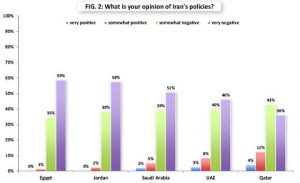
Lebanon: Asked about their attitude toward Hezbollah, the extent of Lebanese sectarian polarization is sharply evident. Among Sunnis, 85 percent express a negative view, and just 14 percent a positive one. But among Shia, the proportions are almost exactly the reverse: 88 percent voice a positive opinion of Hezbollah (including a striking 83 percent “very positive”); while a mere 11 percent say they have a negative opinion.
The latter numbers, while still heavily tilted toward Hezbollah, represent a slight decline since the previous poll two years ago, when a remarkable 94 percent of Shia voiced support for it. And there is some recent evidence that privately, Shia support for Hezbollah may have declined even more. For example, in the 2016 local elections, 45 percent voted against Hezbollah and affiliated Amal candidates, even in their supposed stronghold of Baalbek.
More surprisingly, Lebanon’s substantial Christian minority remains split almost down the middle on Hezbollah: 45 percent in favor, 55 percent opposed. These numbers, too, represent a small erosion in popularity for this movement. Yet almost half of Lebanese Christians still apparently adhere to the view of the country’s Maronite president, Michel Aoun, that Hezbollah represents a positive player in the Lebanese arena.
Regarding Hezbollah’s patron Iran, opinions are similarly divided. Lebanese Sunnis are overwhelmingly (88 percent) opposed to Iran’s regional policy, but Shia are about equally (82 percent) supportive. Christians are again in the middle — but this time more negative toward Tehran, by about a two-to-one margin: 63 percent vs. 37 percent. Views on the importance for Lebanon of good relations with Iran, “regardless of your personal opinion about its policies,” are sharply divided among these three major communities, on roughly the same lines.”
https://www.washingtoninstitute.org/fikraforum/view/behind-lebanons-continuing-crisis
Bahrain: The views of Bahrain’s two major Muslim sects are very sharply at odds on Iran. Asked their views of Iran’s regional policies, precisely 2 percent of Bahraini Sunnis voice even a “somewhat positive” attitude. But 68 percent of their Shia compatriots view Iran’s policies favorably. Similarly, a mere 5 percent of Sunnis, but 60 percent of Shia, say it is important for Bahrain to maintain good relations with Iran. And conversely, 63 percent of the Sunnis, compared with just 23 percent of the Shia, say that “the most important issue” in the dispute with Qatar is “to find the maximum degree of Arab cooperation against Iran.”
By comparison, attitudes toward Iran’s regional allies show somewhat less divergence between Bahrain’s two major sects. Hezbollah is viewed negatively by fully 95 percent of the country’s Sunnis—but also by 62 percent of its Shia. And the Houthis of Yemen are disapproved by 90 percent of the Sunnis—and by 71 percent of the Shia as well. Conversely, the Sunni fundamentalist Muslim Brotherhood, which operates openly in Bahrain, is seen favorably by 32 percent of the Sunnis there; while exactly 0 percent of Bahraini Shia express a positive opinion of that exclusionary organization.
Iran and related issues remain real bones of contention on which the Shia majority of the population clearly differs, both from official policy and from the views of the country’s ruling Sunni minority. At the same time, there is relatively little sympathy among Bahrain’s Shia for Iran’s violent militia allies in the ongoing sectarian proxy wars elsewhere in the region. The common popular desire for compromise and coexistence could, therefore, be a basis for relative stability, and perhaps ultimately even for political reconciliation.
Qatar: Equally surprising and significant are the mixed views of Qatar’s citizens about the key issues in the intra-Arab dispute. First, regarding Iran, Qataris are solidly opposed — by a margin of 79 to 16 percent — to its current regional policies, despite charges by other Arabs that Qatar’s royal family is too close to Tehran. Iran’s regional proxies fare even worse in Qatari public opinion: both Hezbollah and the Houthis of Yemen get negative ratings from fully 90 percent of Qatar’s adult population. And a narrow majority (53 percent) of Qataris even say that “the most important issue in this situation is to find the maximum degree of Arab cooperation against Iran.””
Political Implications of Arab Views on Iran’s Role in Syria
Most Arab rulers can rest assured that their people harbor almost no sympathy for Iran’s regime. On the contrary; two separate sets of surveys conducted late last year, by the Washington Institute and by Zogby International, show very widespread Arab popular dislike of Iran’s government—both overall and in relation to its specific regional policies and proxies, so new US steps against Iran’s regime would have wide popular Arab support. The only major exceptions to this rule are the two million or so Shia citizens of Lebanon, and the 400,000 or so of Bahrain, who generally voice very favorable views of their fellow Shia political leaders, whether inside or outside Iran.
Views of Iran’s “current policies in the region” are overwhelmingly negative in most Arab countries I recently polled by for the Washington Institute. This includes 80 to 90-plus percent of the public in Egypt, Jordan, Saudi Arabia, Kuwait, and the UAE. Notably, in the latter three countries, even among their Shia minorities, fewer than half express a favorable view of Iranian policy.
By contrast, in Lebanon and Bahrain, where Shia Arabs comprise a plurality or majority of the total native population, views of Iran’s policies are much more heavily polarized by sect. In Lebanon, 82 percent of the Shia, but just 7 percent of the Sunnis, say they approve those policies; among Christians, that figure is roughly in the middle, at 37 percent. In Bahrain, similarly, positive views of Iran’s regional behavior characterize 68 percent of the Shia, compared with a mere 2 percent of the Sunnis in that small but strategic island country.
Remarkably, majority Arab popular opposition to Iran extends even to approving the possibility of forming an alliance with Israel against that common enemy. Last September, the Zogby poll, which no one can reasonably accuse of pro-Israel bias, asked six different Arab publics about “an alliance between Israel and Arab governments…in fighting extremism and combating Iran’s regional interference.” In Egypt, 59 percent said this would be “desirable,” if Israel were to implement the Arab Peace Initiative and end its occupation of Palestinian lands,” implementing the Arab Peace Initiative. In Saudi Arabia, the UAE, and even Iraq, half the public seconded this opinion. The proportions were only modestly lower in the other two countries polled: Lebanon, 40 percent; and Jordan, 35 percent.
Attitudes about specific Iranian policies toward Syria and Iraq are also widely negative, according to the latest Zogby poll. A solid majority in Jordan, and overwhelming majorities in Egypt, Saudi Arabia, and the UAE, say they disapprove of Iran’s role in both Syria and Iraq. Most interesting, though, is that Iraqis themselves predominantly oppose Iran’s role in their own country, by a margin of 46 to 36 percent. And they oppose Iran’s role in Syria by an even larger margin: 55 to 22 percent.
Overall Arab popular attitudes toward two of Iran’s major regional allies, Hezbollah and the Houthis in Yemen, are equally negative, as measured again in the Washington Institute survey. In Egypt, Jordan, Saudi Arabia, the UAE, Kuwait, and Bahrain, 80 to 90 percent say they disapprove of both those movements. In the latter two countries, significantly, this negative view is predominantly shared among Shia citizens as well. Only in Lebanon is do attitudes toward Iran’s local proxy reflect this sectarian cleavage: 88 percent of Lebanese Shia say they approve of Hezbollah; while about the same stunningly high proportion of the country’s Sunnis, 85 percent, say they disapprove of it.
Methodologically, both the Washington Institute’s and these Zogby surveys comprised face-to-face, private interviews with representative national samples of approximately 1,000 respondents in each country. The Washington Institute survey employed a standard, multi-stage stratified geographic probability sampling method. The Zogby poll, according to its public presentation by James Zogby, used a somewhat less reliable quota-assisted sampling technique. Full methodological details for the Washington Institute poll are available from the author on request.”
Future Prospects
Notwithstanding these extremely critical Arab views, at both the official and the popular levels, of Iran’s presence in Syria, Arab governments have had neither the ability nor the will to reverse the situation on their own. Instead, they have turned to other players for help, or at least protection, with very disappointing results. From today’s vantage point, Iran appears well entrenched inside Syria, with little obvious prospect of being ousted anytime soon.
Indeed, the most recent, respected ICG report finds if “difficult to imagine a reversion to the pre-2011 situation, when the Syrian state, while allied with Iran, was not an arena for an open Iranian presence and military operations. For the foreseeable future, Iran will continue to be a pillar of the regime’s security. But it risks undermining its investment should it overplay its hand.”[5] Iranian officials, in sharp contrast, deny that they wish to remain in Syria forever. One is quoted as saying that. “Neither Iran nor Hizballah want to stay in Syria…. We’re trying to help Syria strengthen itself, just like we’re doing in Iraq with the Popular Mobilization Units.” [6] Few, however, believe that these assertions are anything but propaganda.
The new U.S. position on Iran’s presence in Syria, as articulated in Secretary of State Pompeo’s May 2018 speech on the subject, is directly and absolutely negative about the desired ends, but arguably rather indirect about the means to achieve them. Iran, he asserted, “must withdraw all forces under Iranian command throughout the entirety of Syria.” More than that, “Iran must end its support to Middle East terrorist groups, including Lebanese Hizballah, Hamas, and the Palestinian Islamic Jihad.” [7] However, beyond sanctions and related economic and diplomatic pressures or inducements, Pompeo did not specify how military or other coercive measures, American or otherwise, might or might not be taken against Iran’s overt and proxy entrenchment inside Syria.
As a result, the most likely scenario is unfortunately one in which Iran’s strong presence in Syria is very difficult if not impossible to dislodge. One serious analysis flatly predicts that
Bashar al-Assad will remain at the helm for the foreseeable future and the country … will remain under the influence of Iran and its allies. The regime will continue to depend on Iran for security and control of its own territory. Tehran has already set down roots in the Syrian economy, with stakes in the oil, gas, mining, agricultural, power and communications sectors, among others. Iran’s ground presence and belief that maintaining a friendly Syria is an existential concern means it is all but inconceivable that the Iranian military could be pushed from the country … as Israel demands.[8]
Nevertheless, one slim yet perhaps not negligible possibility of overturning this dire scenario is critically examined in the section below.
The Concept of a “Syrian Wedge” Between Iran and Russia
As of July 2018, with Assad regime forces in control of Syria’s major cities and rapidly expanding their hold further to the south, the notion of pushing Iran out of the country by toppling its allied regime in Damascus seems relegated to the realm of fantasy. Instead, a new dream is gaining ground among some participants and observers: pushing Iran out, or at least narrowing its field of operations, by driving a diplomatic wedge between Tehran and Moscow. Both wield substantial influence and maintain a significant security presence inside Syria, in support so far of their common ally Assad — but with long-term interests that could potentially diverge. Unfortunately, however, this idea is reminiscent of the West’s long years, ever since the Syrian uprising erupted in early 2011, of chasing vainly after Moscow’s repeated hints that it was not wedded strictly to Assad himself, and that it might accept some kind of “political transition” away from the dictator so long as its own interests in Syria were preserved.
As for the broader Arab arena, Russia doesn’t care very much about Arab public opinion’s mostly unfavorable view of Iran and Hezbollah, for several reasons. First, Russia’s priority now is to support Assad’s regime, and both Iran and Hezbollah are a necessary part of that in a purely military sense. (In fact, Russia has been sharing some intelligence with Hezbollah for quite a while, at least since 2006, even before the Syrian civil war.) Second, Putin knows that he is now viewed as an important player even by Arab governments that dislike his policies — including Saudi Arabia, to cite one key example. Third, some major Arab governments, especially Iraq, but I suspect Egypt as well, actually prefer Assad to Daesh or the Muslim Brotherhood, so they do not oppose Russian policy in Syria. For all these reasons, I conclude that Moscow thinks it is winning more than losing by joining Hezbollah’s fight to prop up the Assad regime.
In reality, looking to Russia for help in this arena also overlooks its repeated violations even of tactical commitments there — such as its recent creation, and then systematic destruction, of a “de-escalation zone” in the southwest, near Syria’s borders with Jordan and Israel. Nevertheless, as U.S. President Trump approached a summit with Russian President Putin in mid-July, his senior advisers continued to talk of a possible bilateral understanding to limit or to distance Iran’s expeditionary forces from Syria’s international frontlines.
As if this were not difficult enough, a key additional complication is Iran’s extensive use of proxies rather than actual Iranian troops in its foreign adventures. Even if Iranian soldiers were withdrawn from the frontiers, that would still leave thousands of mostly Shiite foreign fighters there, under its direct or indirect command: Lebanese Hezbollah, Iraqi Hashd al-Sha’abi [Popular Mobilization] militia offshoots, and others.
Whether or not these forces would or would not be included in some notional agreement about restricting Iran’s own activities in Syria remains a major unresolved issue. Worse yet, it is also an insufficiently clear one, judging from the declarations of some of the key players. Moreover, as noted above, a considerable number of Iran’s client troops in Syria, whether foreign or local, are now simply merging into Syrian army units, thereby quite possibly becoming Iranian agents in disguise.
As for the immediate question of possible Russian pressure on Assad to remove, or at least restrain, these Iranian-led units, there exist good reasons to doubt whether such pressure would succeed — even in the unprecedented event that Moscow decided to exert it. The case against this contingency was well put as far back as mid-2016 by Fabrice Balanche, one of the world’s leading experts on Syria and its current regime:
Although [Assad] still does not control most of the country and his army can barely preserve the recent territorial gains facilitated by the Russian air force’s intervention, Assad feels less threatened because he holds Damascus. And because he no longer needs Putin to defend the airspace over Damascus, he will be less likely to bow to Russian pressure…. What Assad does still need in Damascus is continued strong defensive military support form Iran, its proxy Hezbollah, and Iraq Shiite militias. As it stands … neither Assad nor Iran will accept a political transition in Syria, even if Russia agrees to one.[9]
These considerations narrow, but do not utterly abolish, the scope for leveraging broader Russian interests in order to limit Iran’s influence in Syria, along with the threats that poses to Syria’s neighbor and beyond. The final section below suggests one credible option for
A Ray of Hope?
There is some prospect that for the right price, Russia might be willing to make a more serious effort to restrain, though not to eliminate, Iran’s activities in Syria. A longer-term objective should be to at least begin the process of distinguishing legitimate actors and interests in Syria from Iranian, Hezbollah, and other foreign sectarian militias there (see “Preventing the Radicalization of Syria,” Fikra Forum). The United States should urge the eventual withdrawal of the latter actors, perhaps keeping open an option for international peacekeepers by common consent. Even if such a declaration has no immediate practical effect, it would help reassure American friends inside Syria and beyond, and possibly set the stage for future steps to separate Russian and regime interests from those of Iran and its dangerous proxies.
Why would Russia accept any of this? For one thing, Trump is prepared to offer the sweetener of selective sanctions relief. Crucially, though, he wouldn’t need to offer very much, because Russia has additional reasons to compromise. First, this deal would defer action against the Assad regime — which is too weak to retake control of the whole country without outside military support anyway. Second, Russia really does want to rid Syria of terrorists, which it sees as a threat to its own security. And third, a realistic compromise on Syria would serve Moscow’s ability to balance among rival regional players: Sunnis and Shiites, Turks and Kurds, even Arabs and Israelis.
Notably, some Arab players on opposite sides of the war are newly aware of this last important point. On January 9, 2017, the pro-regime Syrian daily al-Watan published on op-ed with the sensational headline “Are Iran and Russia Really Selling Syria to Turkey?” — before concluding with the sensible observation that Moscow “knows it must have a relationship not only with its allies but also with its adversaries.” Four days later, the independent Jordanian daily al-Ghad put the case more bluntly: Russia, it opined, now wants “to change its image as the superpower that stood against the Sunnis.”
This limited, transactional approach to managing Iran’s heavy and dangerous profile in Syria is admittedly uncertain, as well as potentially risky, but it appears to be the best available option. Different U.S. and regional policies in the recent past might well have preempted some of these dangers and then opened up better options, but all that is now history. Going forward, the evidence and arguments presented above point to a more modest but hopefully still realistic set of arrangements just to restrain Iran’s clout in Syria for the time being. This will almost certainly have to suffice until a more propitious political or military horizon emerges — either from the ruins of the Syrian state, or from a drastic change of direction in the Iranian one.
[1] Secretary of State Mike Pompeo, “After the Deal: A New Iran Strategy,” May 21, 2018.
[2] ICG Report, February 8, 2018, p. i.
[3] Ibid., pp. i-ii.
[4] “Iran’s Rising Strategic Foothold in Syria,” p. 6.
[5] ICG report, p. ii.
[6] Ibid., p. 22.
[7] “After the Deal: A New Iran Strategy,” May 21, 2018.
[8] ICG Report, p. 22.
[9] Fabrice Balanche, Policy Watch, The Washington Institute for Near East Policy.


